Related Research Articles
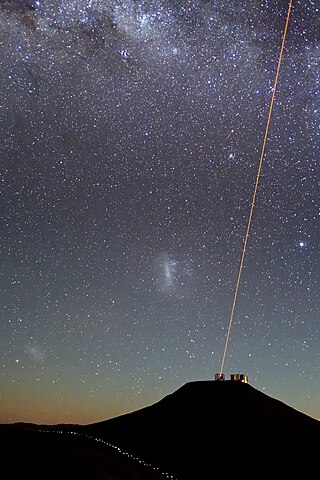
An optical amplifier is a device that amplifies an optical signal directly, without the need to first convert it to an electrical signal. An optical amplifier may be thought of as a laser without an optical cavity, or one in which feedback from the cavity is suppressed. Optical amplifiers are important in optical communication and laser physics. They are used as optical repeaters in the long distance fiber-optic cables which carry much of the world's telecommunication links.
An optical waveguide is a physical structure that guides electromagnetic waves in the optical spectrum. Common types of optical waveguides include optical fiber waveguides, transparent dielectric waveguides made of plastic and glass, liquid light guides, and liquid waveguides.

Double-clad fiber (DCF) is a class of optical fiber with a structure consisting of three layers of optical material instead of the usual two. The inner-most layer is called the core. It is surrounded by the inner cladding, which is surrounded by the outer cladding. The three layers are made of materials with different refractive indices.
A fiber laser is a laser in which the active gain medium is an optical fiber doped with rare-earth elements such as erbium, ytterbium, neodymium, dysprosium, praseodymium, thulium and holmium. They are related to doped fiber amplifiers, which provide light amplification without lasing.
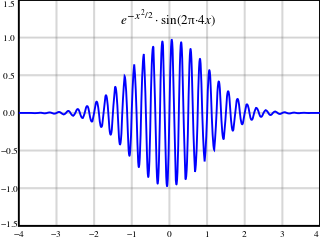
A frequency comb or spectral comb is a spectrum made of discrete and regularly spaced spectral lines. In optics, a frequency comb can be generated by certain laser sources.
Silicon photonics is the study and application of photonic systems which use silicon as an optical medium. The silicon is usually patterned with sub-micrometre precision, into microphotonic components. These operate in the infrared, most commonly at the 1.55 micrometre wavelength used by most fiber optic telecommunication systems. The silicon typically lies on top of a layer of silica in what is known as silicon on insulator (SOI).

In optics, a supercontinuum is formed when a collection of nonlinear processes act together upon a pump beam in order to cause severe spectral broadening of the original pump beam, for example using a microstructured optical fiber. The result is a smooth spectral continuum. There is no consensus on how much broadening constitutes a supercontinuum; however researchers have published work claiming as little as 60 nm of broadening as a supercontinuum. There is also no agreement on the spectral flatness required to define the bandwidth of the source, with authors using anything from 5 dB to 40 dB or more. In addition the term supercontinuum itself did not gain widespread acceptance until this century, with many authors using alternative phrases to describe their continua during the 1970s, 1980s and 1990s.
Dissipative solitons (DSs) are stable solitary localized structures that arise in nonlinear spatially extended dissipative systems due to mechanisms of self-organization. They can be considered as an extension of the classical soliton concept in conservative systems. An alternative terminology includes autosolitons, spots and pulses.
In physics, a pulse is a generic term describing a single disturbance that moves through a transmission medium. This medium may be vacuum or matter, and may be indefinitely large or finite.
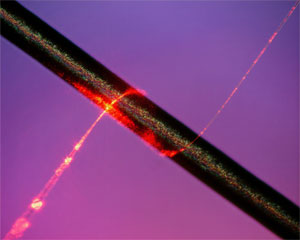
A subwavelength-diameter optical fibre is an optical fibre whose diameter is less than the wavelength of the light being propagated through it. An SDF usually consists of long thick parts at both ends, transition regions (tapers) where the fibre diameter gradually decreases down to the subwavelength value, and a subwavelength-diameter waist, which is the main acting part. Due to such a strong geometrical confinement, the guided electromagnetic field in an SDF is restricted to a single mode called fundamental. In usual optical fibres, light both excites and feels shear and longitudinal bulk elastic waves, giving rise to forward-guided acoustic wave Brillouin scattering and backward-stimulated Brillouin scattering. In a subwavelength-diameter optical fibre, the situation changes dramatically.
In physical optics or wave optics, a vector soliton is a solitary wave with multiple components coupled together that maintains its shape during propagation. Ordinary solitons maintain their shape but have effectively only one (scalar) polarization component, while vector solitons have two distinct polarization components. Among all the types of solitons, optical vector solitons draw the most attention due to their wide range of applications, particularly in generating ultrafast pulses and light control technology. Optical vector solitons can be classified into temporal vector solitons and spatial vector solitons. During the propagation of both temporal solitons and spatial solitons, despite being in a medium with birefringence, the orthogonal polarizations can copropagate as one unit without splitting due to the strong cross-phase modulation and coherent energy exchange between the two polarizations of the vector soliton which may induce intensity differences between these two polarizations. Thus vector solitons are no longer linearly polarized but rather elliptically polarized.
The Mamyshev 2R regenerator is an all-optical regenerator used in optical communications. In 1998, Pavel V. Mamyshev of Bell Labs proposed and patented the use of the self-phase modulation (SPM) for single channel optical pulse reshaping and re-amplification. More recent applications target the field of ultrashort high peak-power pulse generation.
Coupled mode theory (CMT) is a perturbational approach for analyzing the coupling of vibrational systems in space or in time. Coupled mode theory allows a wide range of devices and systems to be modeled as one or more coupled resonators. In optics, such systems include laser cavities, photonic crystal slabs, metamaterials, and ring resonators.
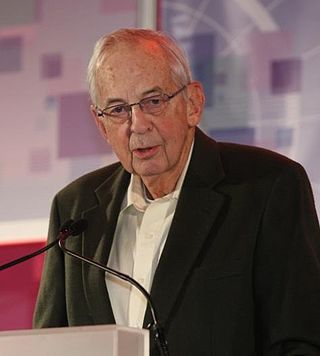
James Power Gordon was an American physicist known for his work in the fields of optics and quantum electronics. His contributions include the design, analysis and construction of the first maser in 1954 as a doctoral student at Columbia University under the supervision of C. H. Townes, development of the quantal equivalent of Shannon's information capacity formula in 1962, development of the theory for the diffusion of atoms in an optical trap in 1980, and the discovery of what is now known as the Gordon-Haus effect in soliton transmission, together with H. A. Haus in 1986. Gordon was a member of the National Academy of Engineering and the National Academy of Sciences.

Orbital angular momentum multiplexing is a physical layer method for multiplexing signals carried on electromagnetic waves using the orbital angular momentum (OAM) of the electromagnetic waves to distinguish between the different orthogonal signals.
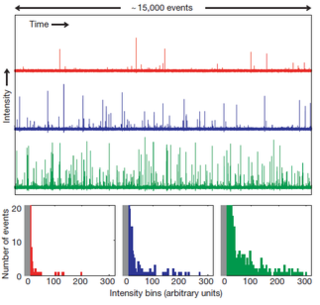
Optical rogue waves are rare pulses of light analogous to rogue or freak ocean waves. The term optical rogue waves was coined to describe rare pulses of broadband light arising during the process of supercontinuum generation—a noise-sensitive nonlinear process in which extremely broadband radiation is generated from a narrowband input waveform—in nonlinear optical fiber. In this context, optical rogue waves are characterized by an anomalous surplus in energy at particular wavelengths or an unexpected peak power. These anomalous events have been shown to follow heavy-tailed statistics, also known as L-shaped statistics, fat-tailed statistics, or extreme-value statistics. These probability distributions are characterized by long tails: large outliers occur rarely, yet much more frequently than expected from Gaussian statistics and intuition. Such distributions also describe the probabilities of freak ocean waves and various phenomena in both the man-made and natural worlds. Despite their infrequency, rare events wield significant influence in many systems. Aside from the statistical similarities, light waves traveling in optical fibers are known to obey the similar mathematics as water waves traveling in the open ocean, supporting the analogy between oceanic rogue waves and their optical counterparts. More generally, research has exposed a number of different analogies between extreme events in optics and hydrodynamic systems. A key practical difference is that most optical experiments can be done with a table-top apparatus, offer a high degree of experimental control, and allow data to be acquired extremely rapidly. Consequently, optical rogue waves are attractive for experimental and theoretical research and have become a highly studied phenomenon. The particulars of the analogy between extreme waves in optics and hydrodynamics may vary depending on the context, but the existence of rare events and extreme statistics in wave-related phenomena are common ground.

James Roy Taylor is an English physicist who is Professor of Ultrafast Physics and Technology at Imperial College London.
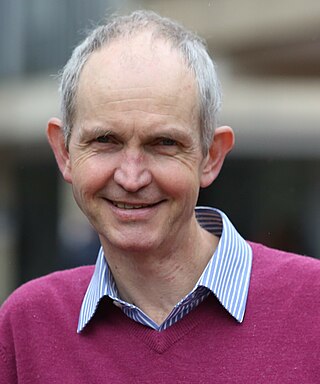
Jonathan C. Knight, is a British physicist. He is the Pro Vice-Chancellor (Research) for the University of Bath where he has been Professor in the Department of Physics since 2000, and served as head of department. From 2005 to 2008, he was founding Director of the university's Centre for Photonics and Photonic Materials.

A tapered double-clad fiber (T-DCF) is a double-clad optical fiber which is formed using a specialised fiber drawing process, in which temperature and pulling forces are controlled to form a taper along the length of the fiber. By using pre-clad fiber preforms both the fiber core and the inner and outer cladding layers vary in diameter and thickness along the full length of the fiber. This tapering of the fiber enables the combination of the characteristics of conventional 8–10 μm diameter double-clad single-mode fibers to propagate light in fundamental mode with those of larger diameter (50–100 μm) double-clad multi-mode fibers used for optical amplification and lasing. The result is improved maintenance of pulse fidelity compared to conventional consistent diameter fiber amplifiers. By virtue of the large cladding diameter T-DCF can be pumped by optical sources with very poor brightness factor such as laser diode bars or even VECSELs matrices, significantly reducing the cost of fiber lasers/amplifiers.
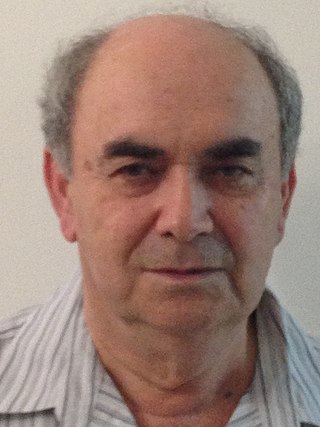
Baruch Fischer is an Israeli optical physicist and Professor Emeritus in the Andrew and Erna Viterbi Faculty of Electrical and Computer Engineering of the Technion, where he was the Max Knoll Chair in Electro-Optics and Electronics.
References
- ↑ Zhao, Jianhui; Liu, Xiaoming (1 May 2006). "Fiber acousto-optic mode coupling between the higher-order modes with adjacent azimuthal numbers". Optics Letters. 31 (11). The Optical Society: 1609–1611. Bibcode:2006OptL...31.1609Z. doi:10.1364/ol.31.001609. ISSN 0146-9592. PMID 16688236.
- ↑ Thomas, Jens; Jovanovic, Nemanja; Becker, Ria G.; Marshall, Graham D.; Withford, Michael J.; Tünnermann, Andreas; Nolte, Stefan; Steel, M. J. (22 December 2010). "Cladding mode coupling in highly localized fiber Bragg gratings: modal properties and transmission spectra". Optics Express. 19 (1). The Optical Society: 325–341. arXiv: 1011.2691 . doi: 10.1364/oe.19.000325 . ISSN 1094-4087. PMID 21263572.
- ↑ See e.g. R. Paschotta, Mode coupling, in the online Encyclopedia of Laser Physics and Technology, https://www.rp-photonics.com/mode_coupling.html
- ↑ Götze, Wolfgang (2008-12-11). Complex Dynamics of Glass-Forming Liquids: A Mode-Coupling Theory. Oxford University Press. doi:10.1093/acprof:oso/9780199235346.001.0001. ISBN 978-0-19-171560-0.